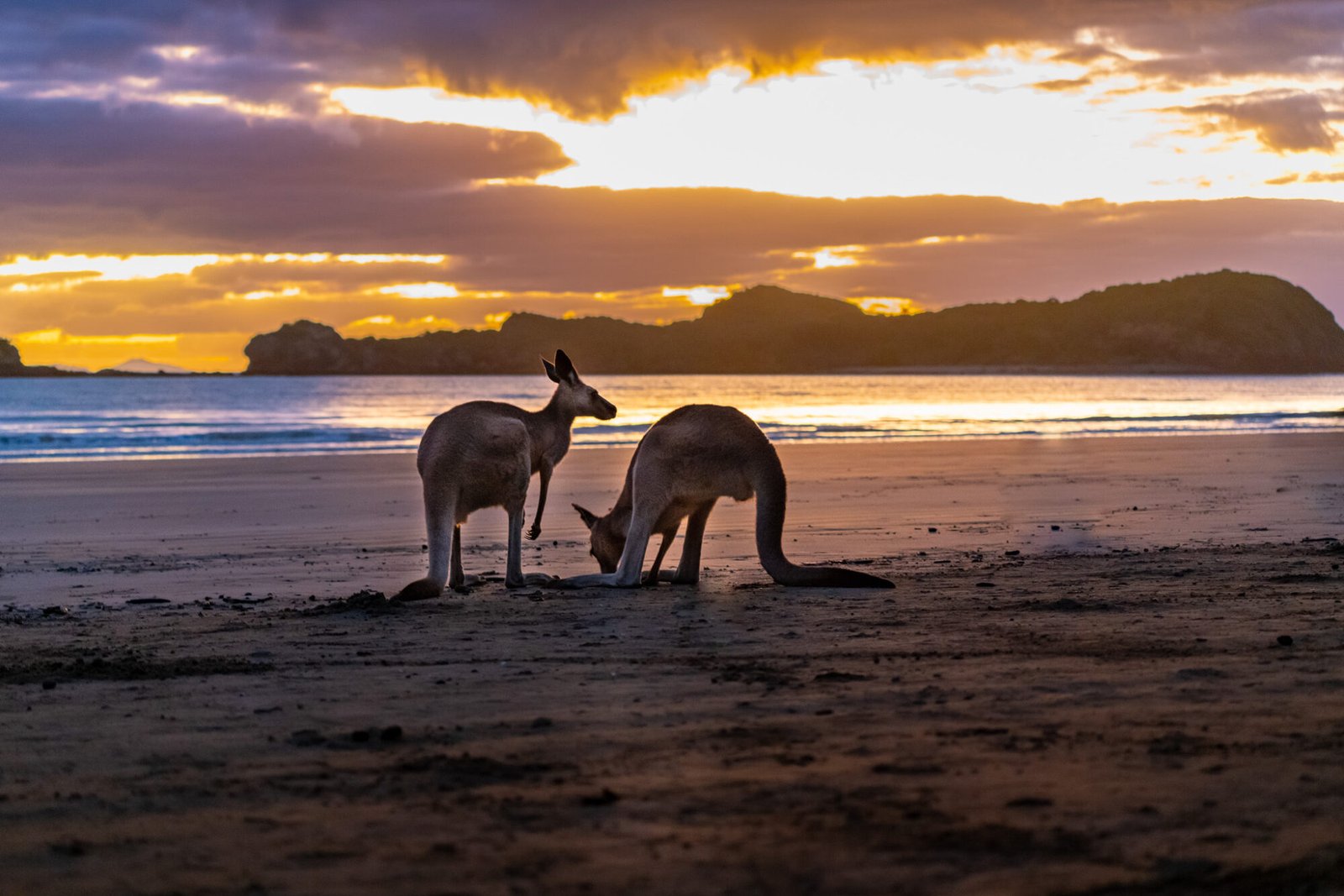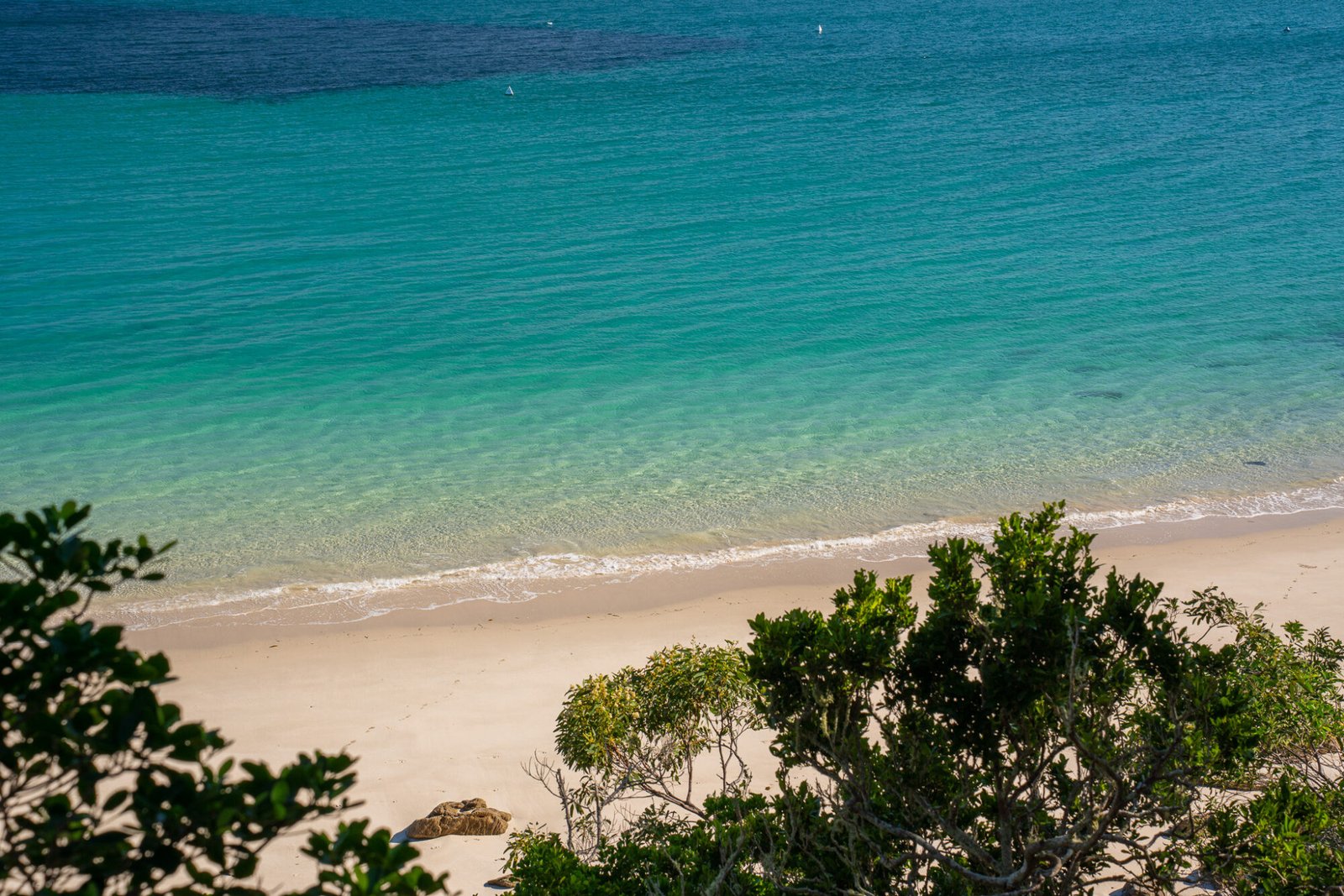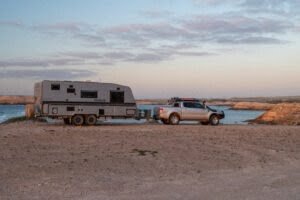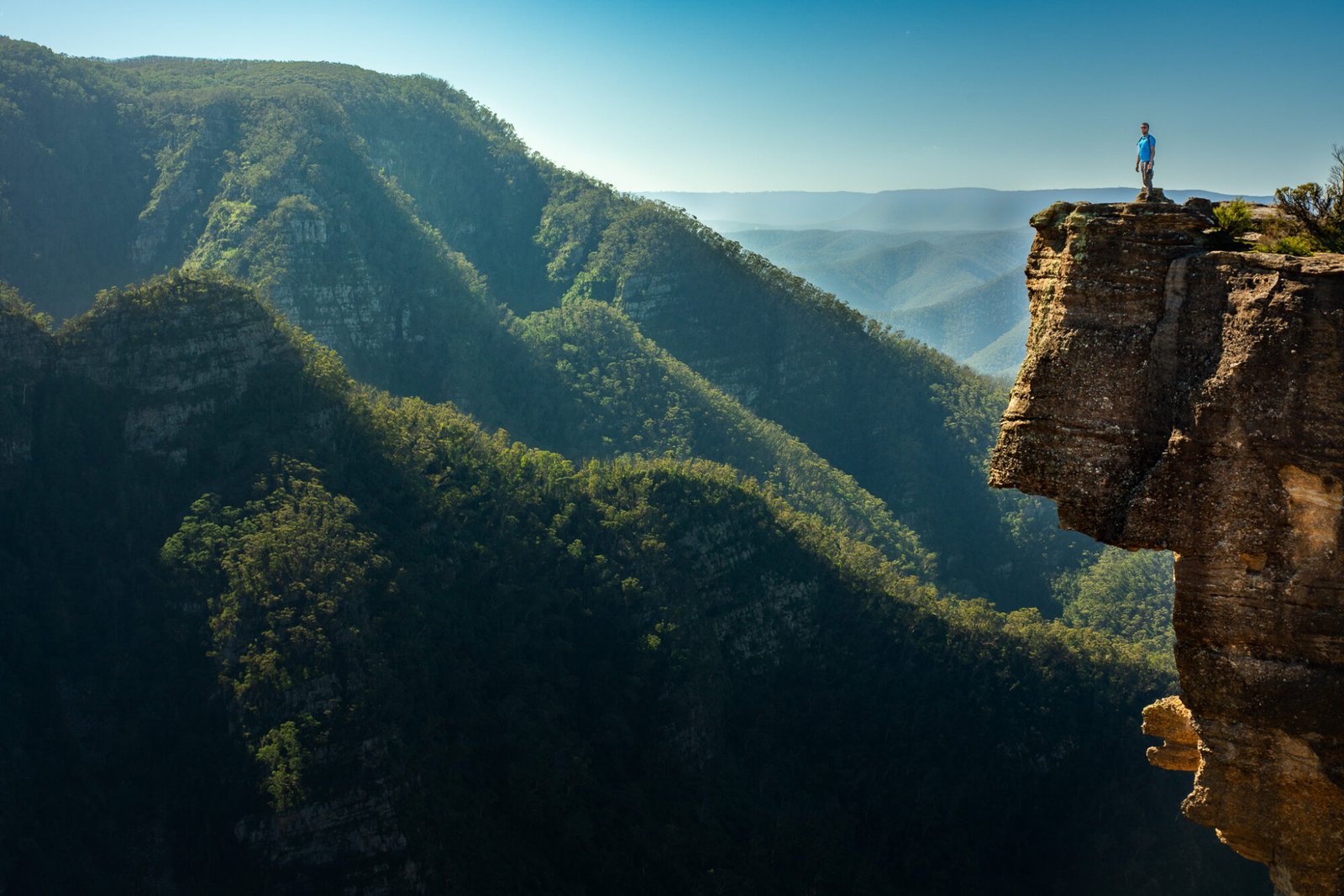When people mention highlights of their visit to Tasmania, often times the East Coast is the top favourite. It’s no wonder why; here you’ll find pristine white sand beaches, postcard perfect national parks, and iconic wildlife. For Part One, we travel through the southern section of the East Coast, from Orford to Swansea, including the marvellous Maria Island.
Orford
Orford is a popular beachside holiday destination and can get quite busy in the summer months. It has many picturesque, swimming-friendly beaches (if you want to brave the cold waters!) such as Spring Beach and Shelley Beach.
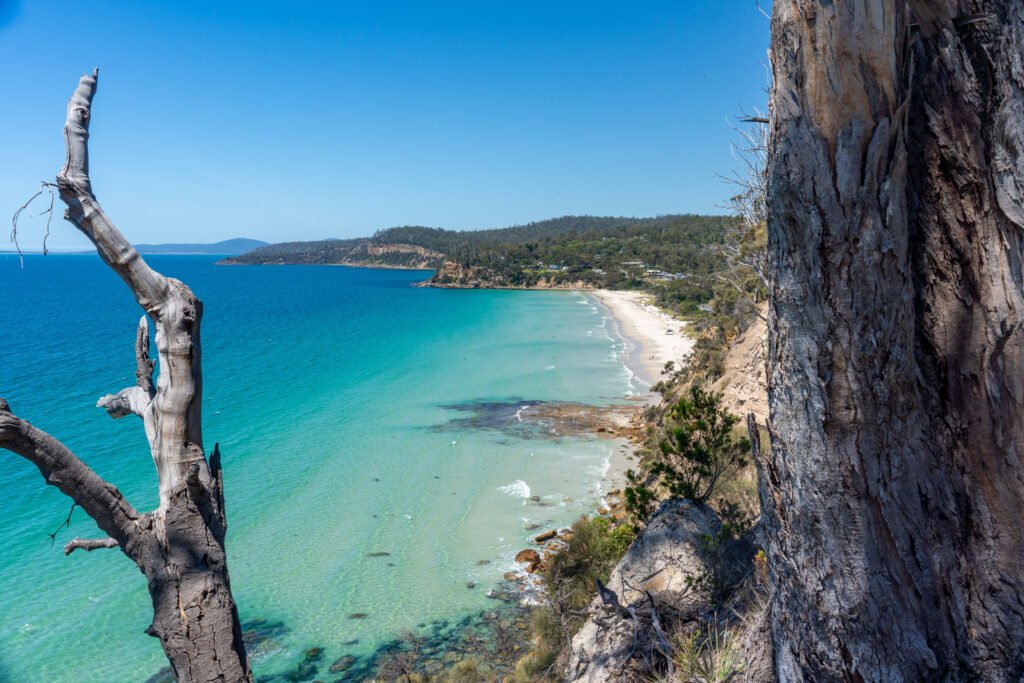
There is a 2km walk in between these beaches with great views overlooking the coastline. Other popular activities in the area include fishing and diving.
Maria Island
The journey to Maria Island starts at Triabunna. We opted to leave our van at the free camp behind the Spring Bay Hotel (donations and patronage encouraged). We had no issues with staying and leaving our van here; however, always put valuables out of sight before leaving. If you have time, The Fish Van is another top notch fish and chippery, as evident by the often long wait for food — but trust us, it’s worth it!
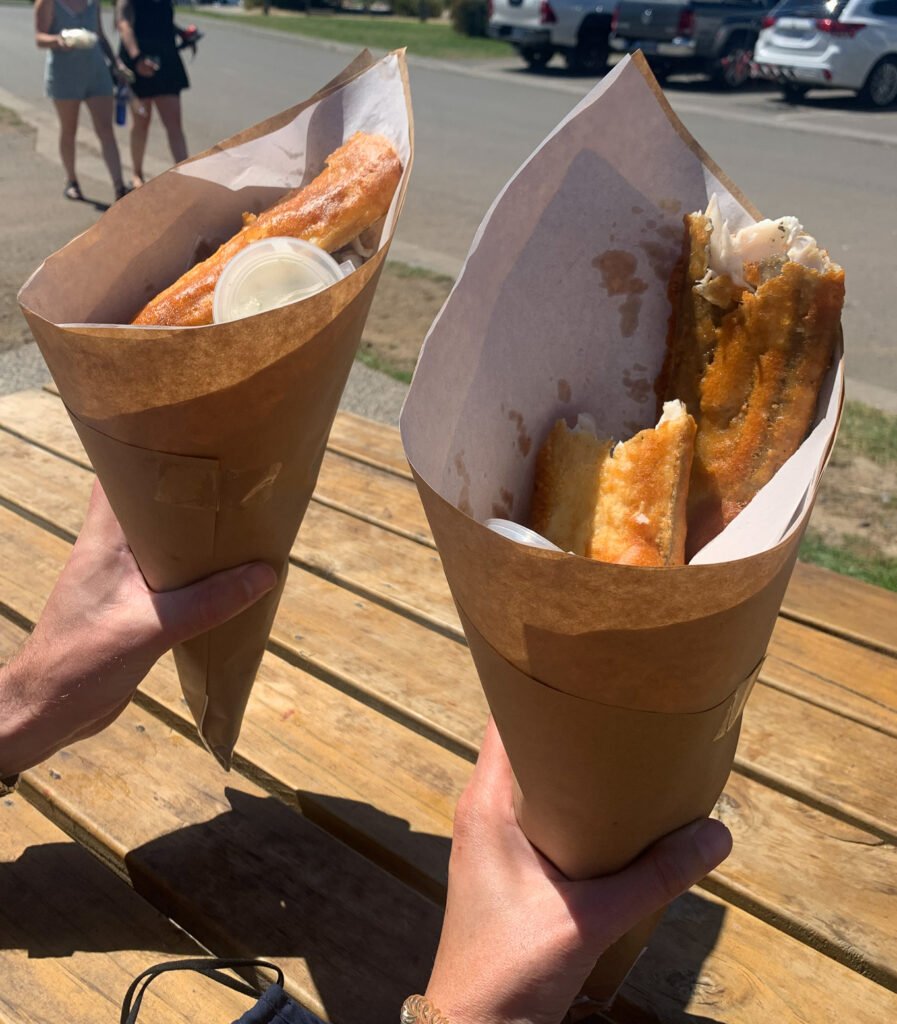
The ferry to Maria Island runs five trips per day and takes around 30 minutes. Book in advance if possible. There are no cars on Maria Island, so you will need to travel by bicycle or on foot. A visit to Maria Island can easily be a day trip, but to explore more and do multiple hikes, you will want at least two days.
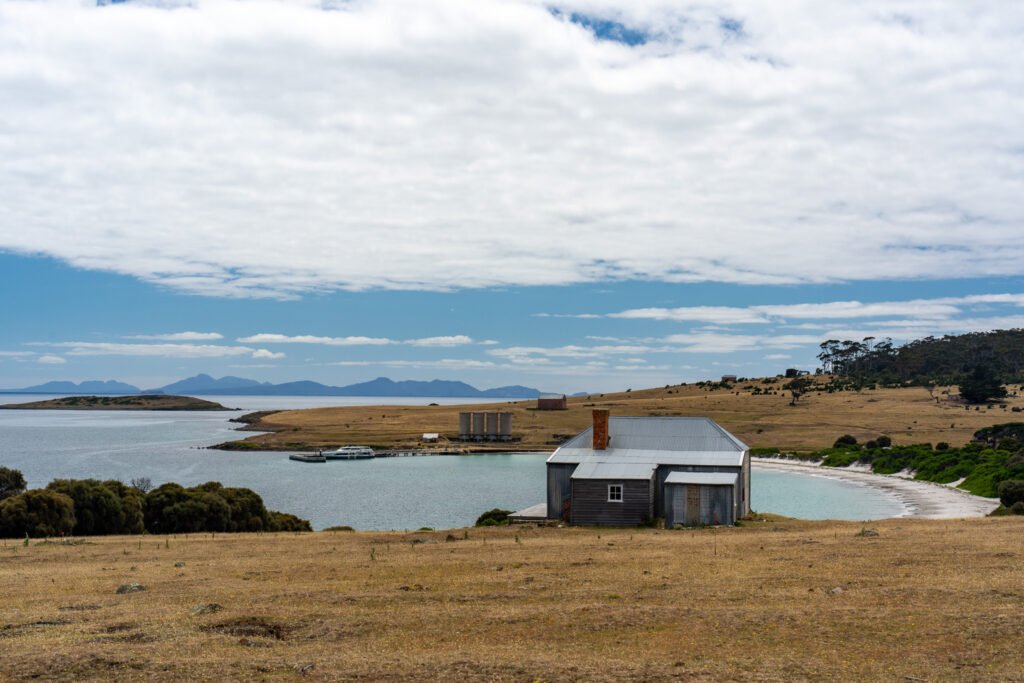
For accommodation, you can book a stay at the old Penitentiary accommodation, which is bunkroom style. Gas BBQs and stoves are available, but you will still need to be fairly self-sufficient and bring your own cooking, eating, and sleeping gear. Otherwise, there are campgrounds available at Darlington Bay, Frenchs Farm and Encampment Cove that do not require pre-booking for those who prefer.
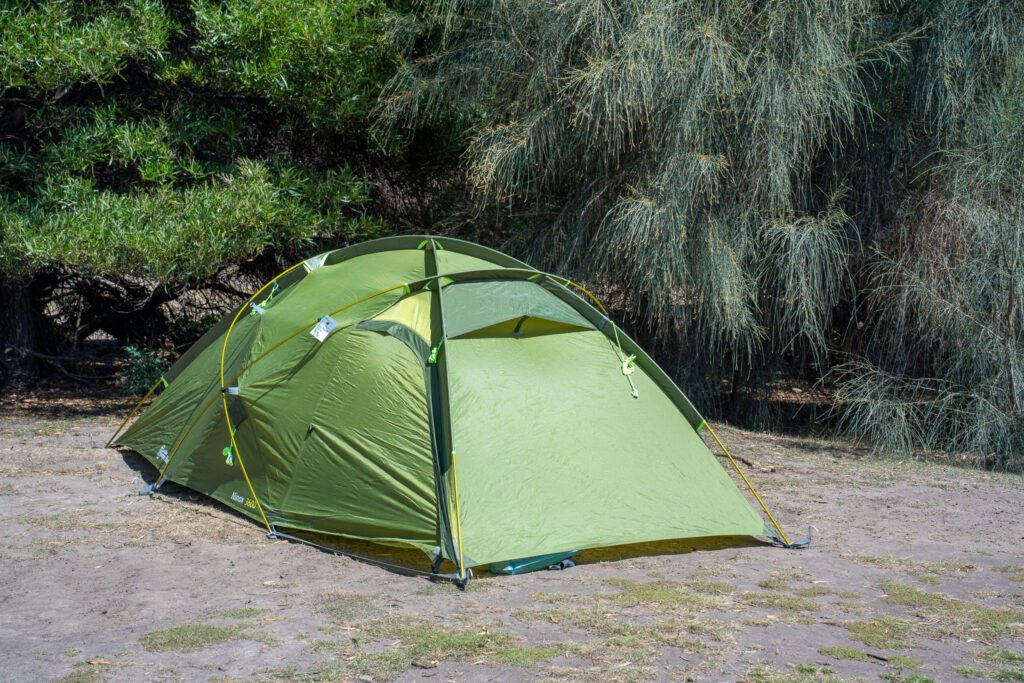
Be aware that the Darlington accommodation and campground are a 5-10 minute walk from the ferry drop off, but fortunately if you don’t have light hiking gear you can borrow a trolley to carry your things. Due to the abundant (and extremely adorable) wildlife around, you will need to be careful as to how you store your food whilst on the island. At Darlington campground, food lockers are available. At Frenchs Farm and Encampment Cove, leave any food in your pack in the vestibule of your tent.

During our visit, we mainly stuck to the northern section of the island, with one night at the Darlington campground and one night at Frenchs Farm, 11km south of Darlington. A third night would be ideal to allow time to explore the southern section of the island all the way to Haunted Bay. Having once been a probation station back when Tasmania was “Van Diemen’s Land,” there are still many well-preserved heritage buildings dotted around the island.
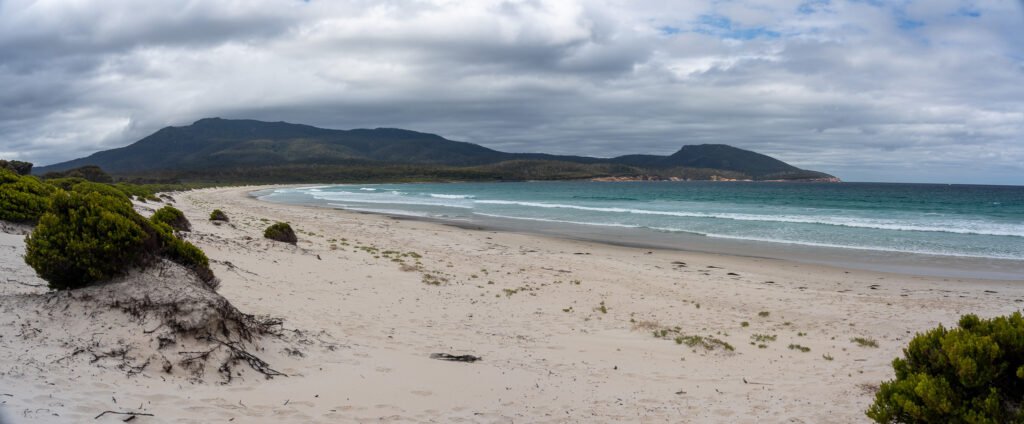
For such a small island, there are a number of activities to choose from during a stay on Maria Island. One of the most popular activities is wildlife watching, particularly the large population of wombats found on the island. These adorable marsupials are found all over the island and spotting one is virtually guaranteed during a visit. You can also see other native animals such as Cape Baron geese, bandicoots, even Tasmanian devils. Always keep a respectable distance from wildlife, and never touch or feed them.
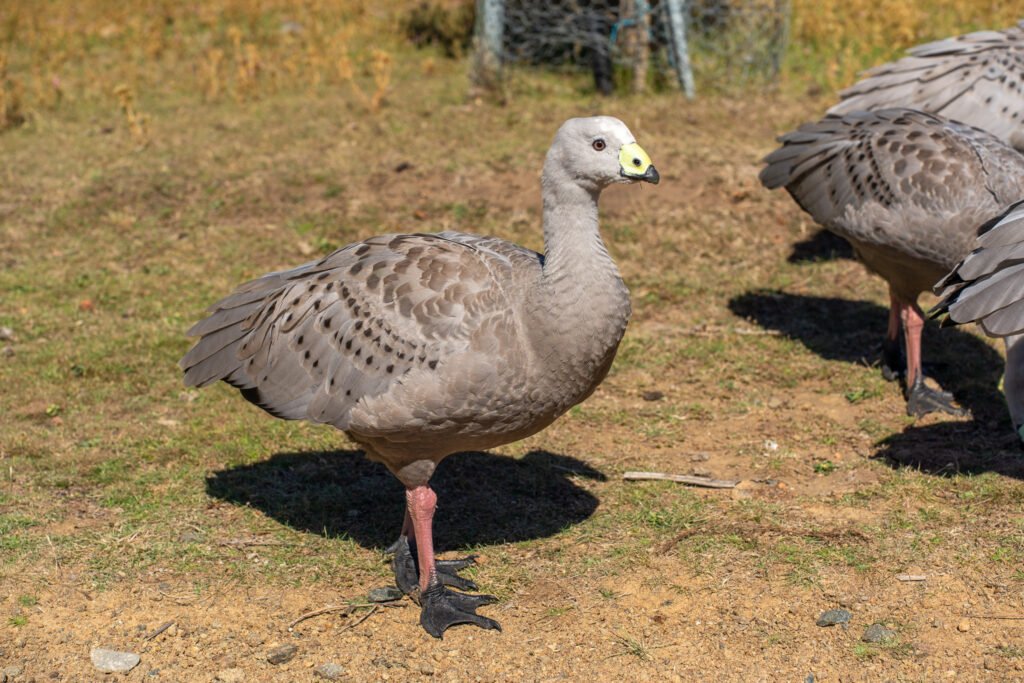

Hiking options abound on Maria Island, from easy and family-friendly to strenuous with 360 degree views. The Painted Cliffs hike, which is 4.3km return, takes you to beautiful sea cliffs with swirls of colour through them. Be mindful of the tides as the cliffs are not accessible on high tide.
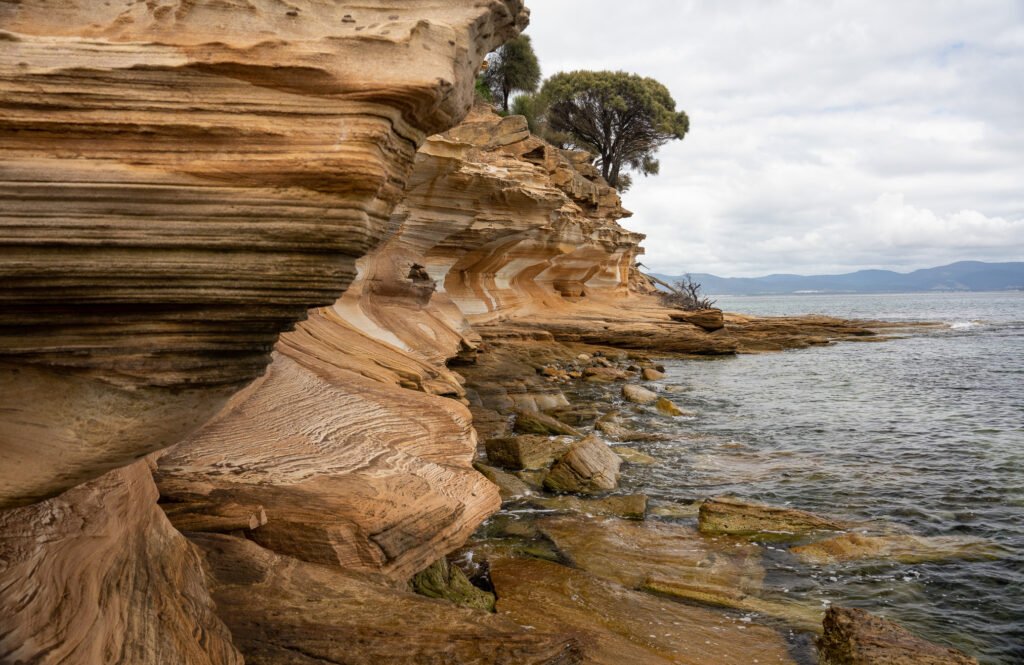
The Fossils Cliff track is an easy, mostly flat hike that takes you to an interesting fossil site along the coastline.
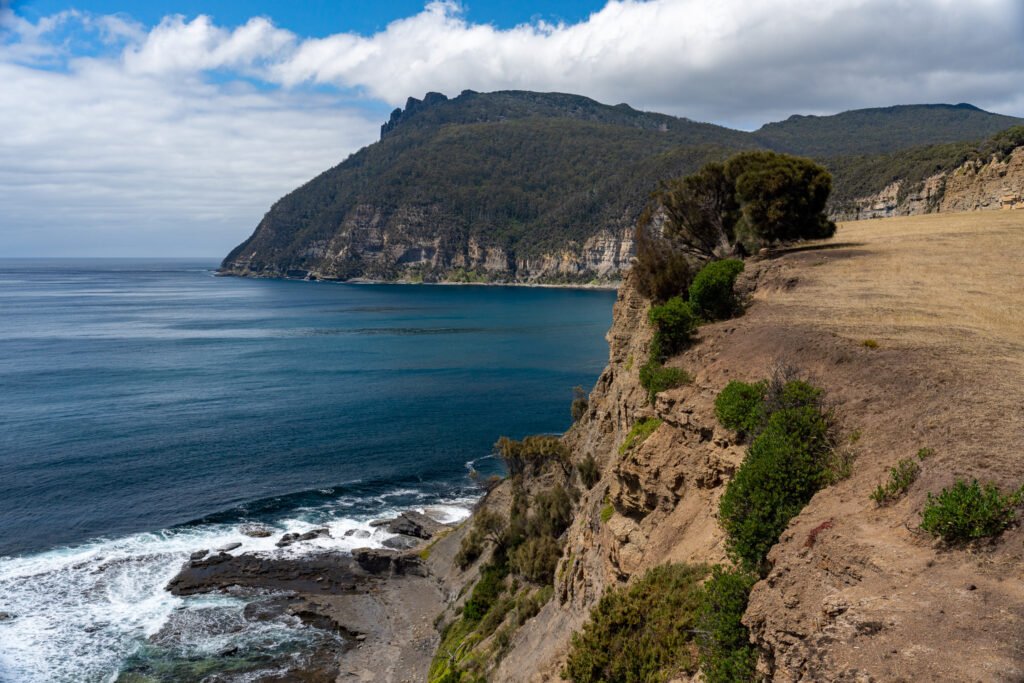
If you’re up for a challenge, you can continue on to the summit of Bishop and Clerk, which takes about 3-5 hours. This track does involve some rock scrambling to get to the top, but the views are well worth the effort (like so many summits in Tasmania).

Much of the water around Maria Island is marine reserve, making it a great option for snorkelling. If diving into Tasmania’s cold waters doesn’t entice you, the well-protected west side of the island is perfect for kayaking or SUPing. For those who enjoy wetting a line, fishing is allowed towards the north end of the island.
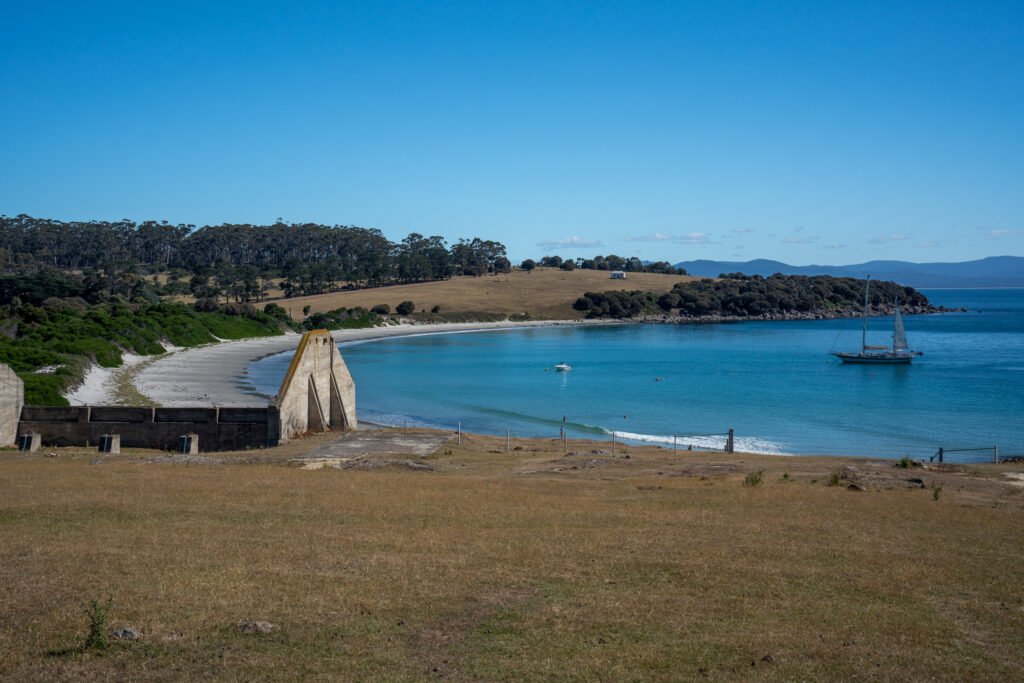
Aurora Australis
The first night we got to Triabunna, we were fortunate enough to witness the Aurora Australis. Unlike the Aurora Borealis in the Northern Hemisphere which usually only occurs during September to April, the Aurora Australis is visible any time of the year due to the longer nighttime hours compared to the northern hemisphere. Certain conditions need to happen for a visible aurora to occur; if you’re keen to see one, we recommend joining Aurora Australis Facebook pages such as this one to get updates on if and when one might occur. The best conditions are a clear sky, minimal light, high ground, and as south facing as possible; the area around Hobart and South Tasmania is the most popular for Aurora chasers.

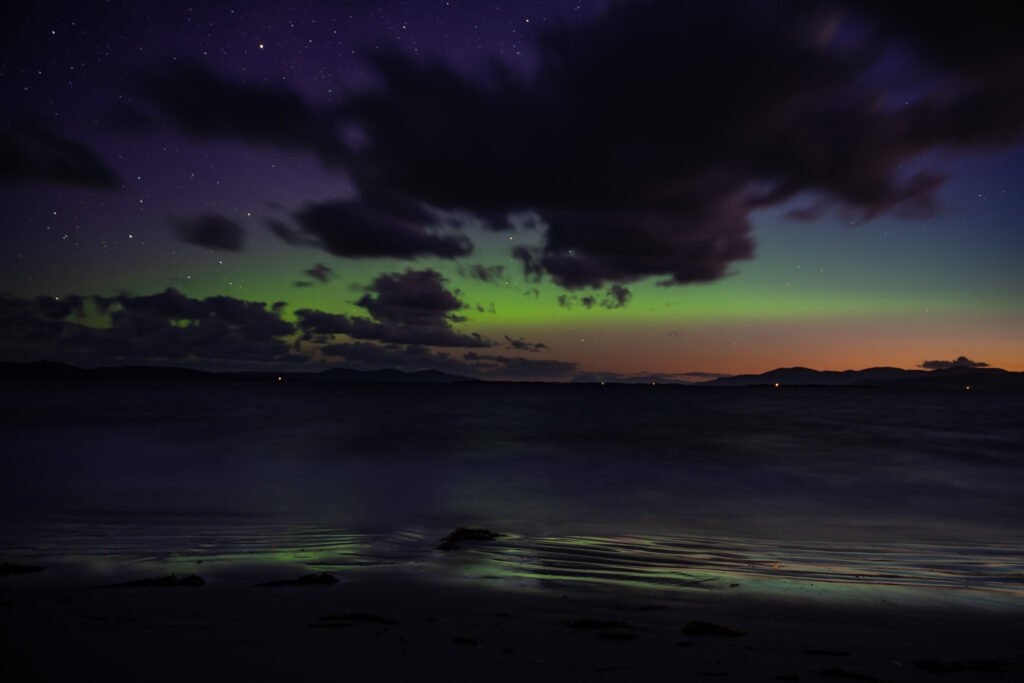
We didn’t tick all of these conditions on the night we saw the aurora, but we were able to find an adequate southern-ish facing beach, which involved driving down some random gravel tracks (we may have seen a Tasmania Devil run across the road!) and walking through tall grass (snakes? What snakes?). However, it was well worth the effort once we got the camera set up and started taking shots. While the colours weren’t visible with the naked eye, the photos that came out of it were stunning!
Swansea
Another 50km north of Triabunna sits the small seaside town of Swansea, which makes a great base to explore the local area. The town sits just across Great Oyster Bay from Freycinet National Park, so you’ll have great views of the impressive pink granite peaks of the Hazards.

There are plenty of pleasant coastal walks to choose from. Spiky Beach and Cressy Beach are two great options for water activities like snorkelling, and the unique convict-built Spiky Bridge is worth a look to learn more about the history of the area.
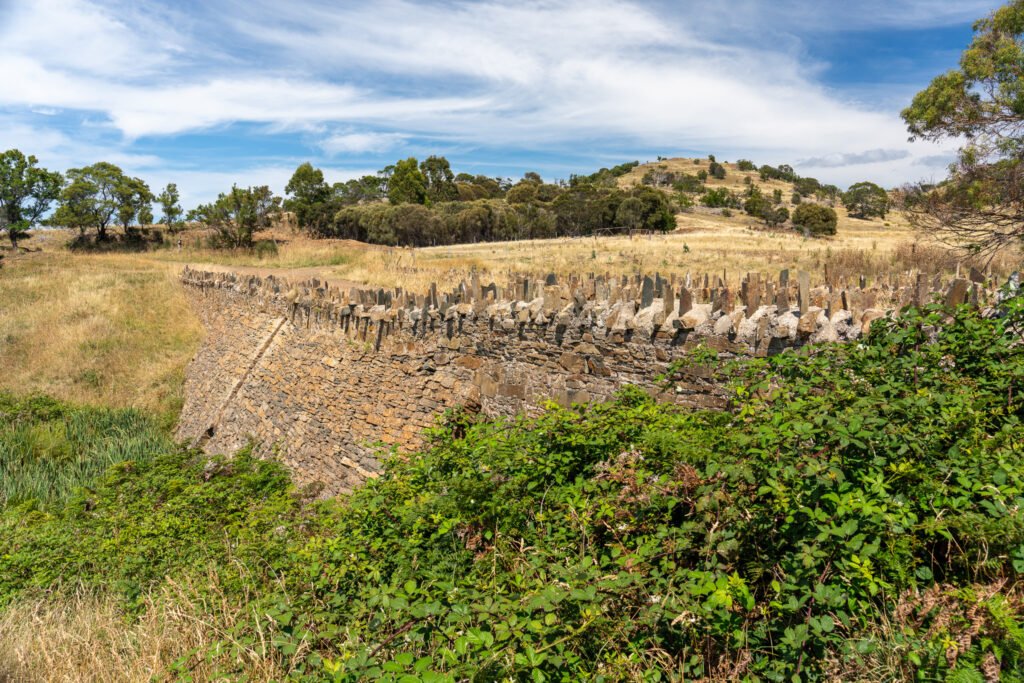
Nearby Meetus Falls and Lost Falls are both accessible by short walks, and Lost Falls offers rock pools for a cooling dip. Don’t miss Kate’s Berry Farm with its delectable berry treats such as ice cream and baked goods. Swansea is also a great base to sample the exquisite cool climate wines of the region; our picks are Devils Corner and Freycinet Vineyards.
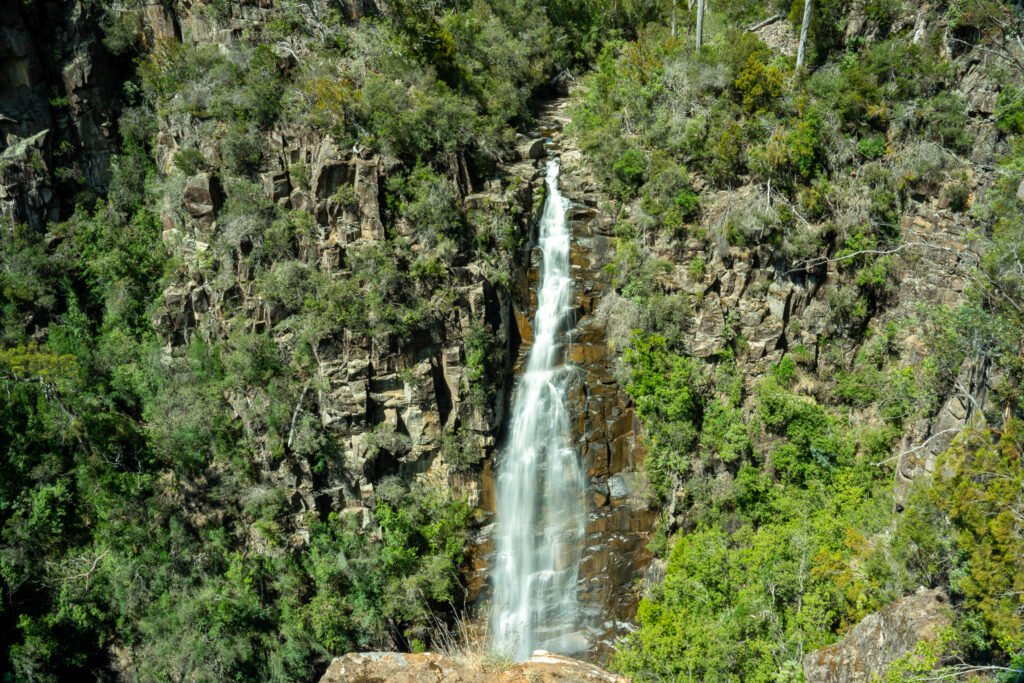
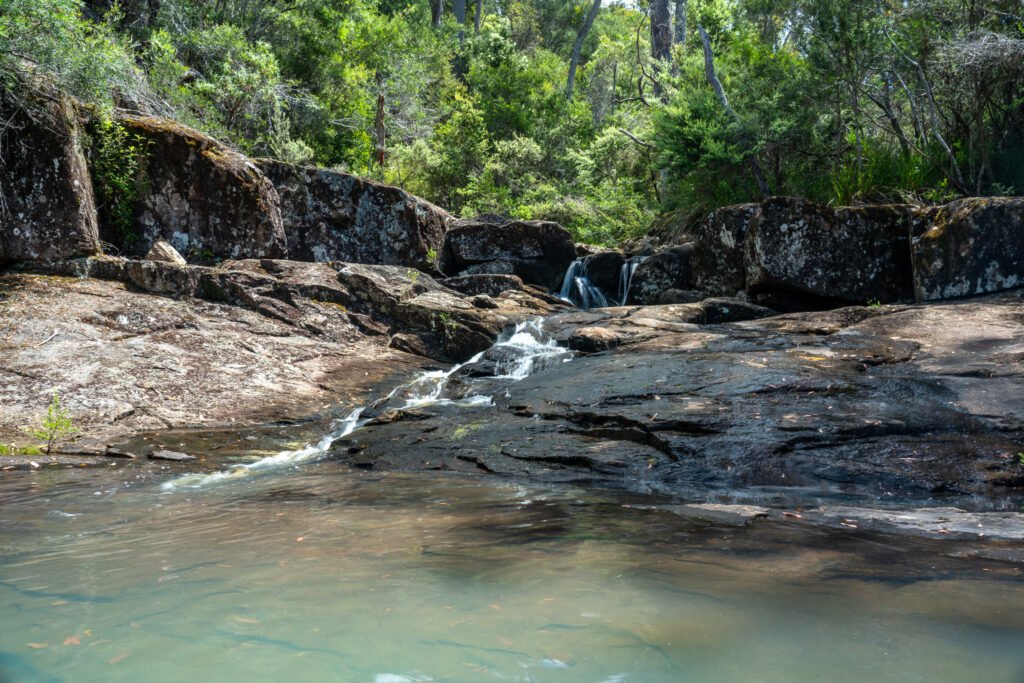
Continuing north from Swansea, the scenery just keeps getting better, with renowned national parks like Freycinet and the famous beaches of Bay of Fires. Check out Part Two of the series to find out more!

